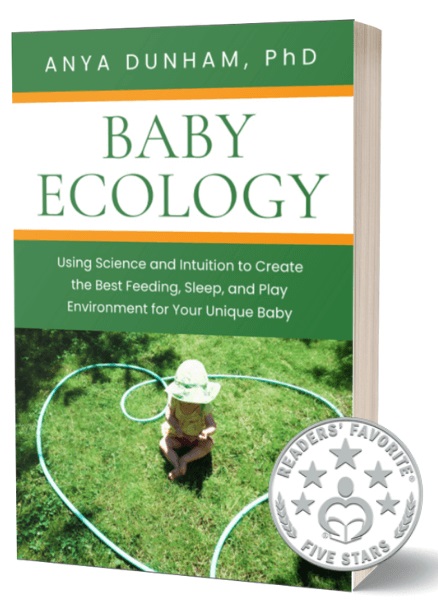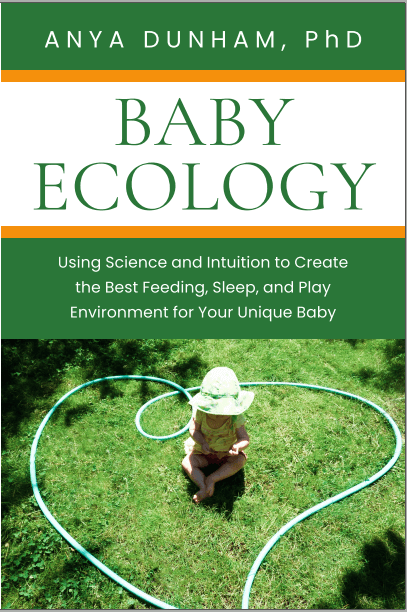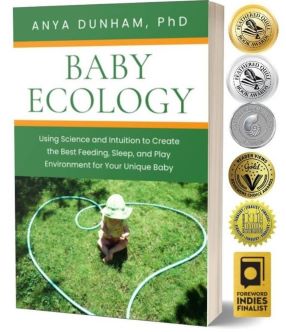Baby Ecology book is here! Learn more
Baby Ecology book is here!
- Home
- Baby-led feeding
- Readiness for solids
4 signs your baby is ready for solids
by Anya Dunham, PhD
Is your baby ready for solids? Here are 4 signs to look for.

Your baby is about to join you at the dinner table – what an exciting milestone!.. Are you wondering if the timing is right? Let’s see what science can tell us about readiness for solids.
Introducing solids is sometimes referred to as “weaning” which may sound like a taking-away process. But in fact it’s quite the opposite: you are about to add more nutrients and experiences with different foods while continuing to breastfeed, formula-feed, or both.
When to introduce solids: scientific studies and advice
You might have heard that “Food before one is just for fun.” This adage is used with good intentions — to promote longer breastfeeding and to reassure parents — but it is not entirely true.
The advice on when to introduce solid foods varies across countries, but generally falls somewhere between 4 and 6 months. At the time I write this, the World Health Organization recommends that “infants start receiving complementary foods at 6 months of age in addition to breast milk.” This is because from about 6 months on, breastmilk is no longer enough as the only source of some of the essential nutrients, especially iron: by this age babies deplete the iron stores they had at birth while their needs for iron remain very high.1
So, the recommended range for introducing complementary foods, or solids, is between 4 and 6 months. But it is also important to be mindful of the differences between babies: some are ready for solids earlier and others need a bit of extra time.
From a gross motor and oral motor development perspective, main signs of readiness are the ability to sit upright and the disappearance of the tongue-thrust reflex.2 It’s also important to consider babies’ interest in table foods and their ability to communicate being hungry or full. Healthy, full-term babies develop motor skills and mealtime communication abilities at different times. Take a look at these 7 common milestones:2,3
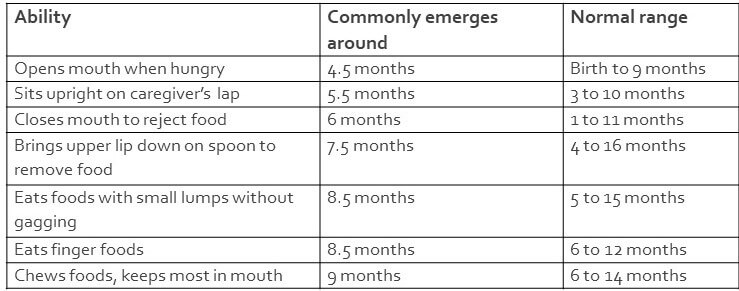 Based on Skinner et al (1998) and Carruth and Skinner (2002).
Based on Skinner et al (1998) and Carruth and Skinner (2002).See how wide the ranges are for each milestone? One healthy 6-month-old baby may demonstrate all of these abilities, while another may not yet show any of them. Yet, both babies would be within normal range!
This article describes just a couple of interesting - and useful - facts about babies from my award-winning book, Baby Ecology. In Baby Ecology you will find a comprehensive chapter on feeding, along with chapters on sleep, care, and play.
Is your baby ready for solids?
As you prepare to introduce solid foods, consider not only how old your baby is, but also where she is developmentally: is she ready to play an active part in eating?
Your baby will likely be ready for solid foods sometime between 4 and 6 months when she can:4
- Sit upright well, alone or with support
- Open her mouth when she sees food coming
- Close her mouth and turn her head away when she doesn’t want it
- Keep her tongue flat and low instead of pushing it out when something touches her lips (which tells us her tongue-thrust reflex has disappeared)
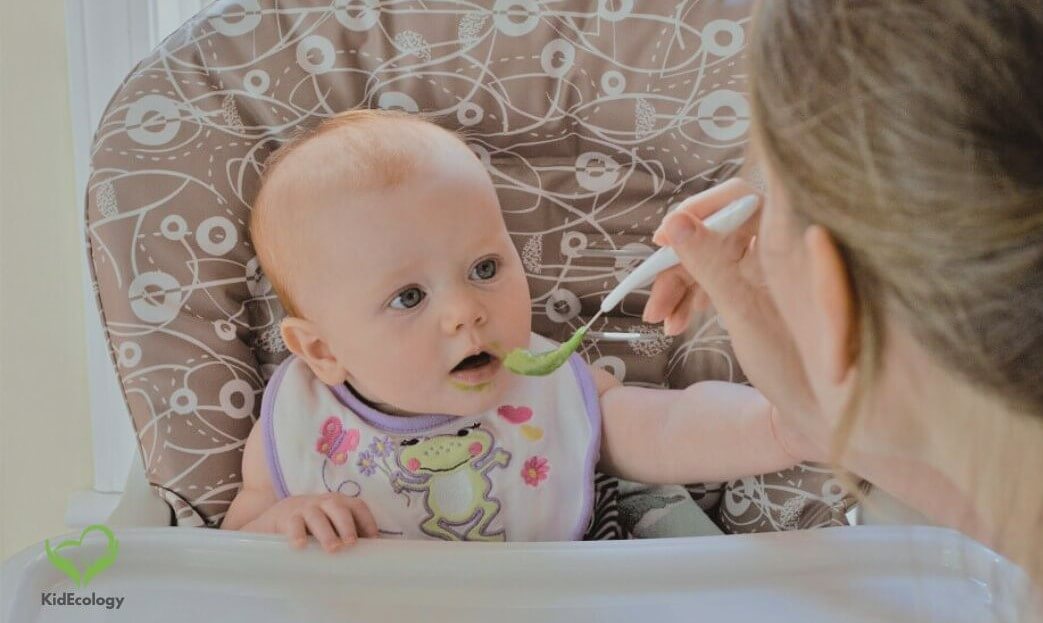 "I would like some more"
"I would like some more"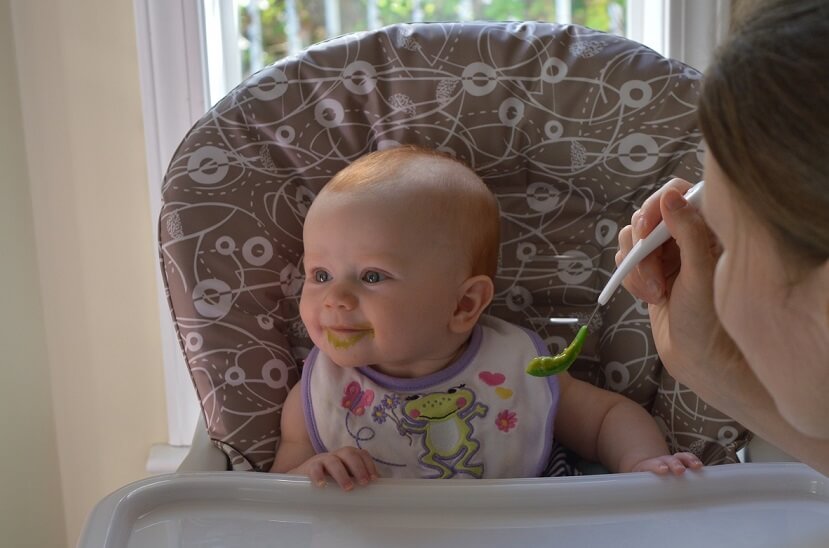 "All done, more interested in surroundings now"
"All done, more interested in surroundings now"What if my baby does not yet show these signs?
If your baby is younger than 6 months, healthy, and growing well, but not yet showing these signs, wait and keep observing. He’s developing incredibly fast and there’s a good chance he’ll be ready as soon as next week.
Imagine you’re at a restaurant. Your favourite dish is on the menu, yet you’re offered another dish that looks quite unusual. You figure you’ll give it a try. Except that you’re told you must eat it while balancing on one foot and with one arm up in the air. How much would you be able to focus on the taste and texture of the dish? Would you enjoy it and look forward to trying it again?
This is how a baby who’s not quite ready for solid food might feel.
But my 4-month-old keeps waking at night… Maybe solids will help?
Waking up more frequently at night is not, on its own, a sign that your baby needs solid food. (Read more about this and 9 other surprising baby facts.) Around 4 months, most babies begin waking more because of the changes in their sleep structure. Introducing solids does not help babies sleep better: babies fed solids are less likely to feed at night, but just as likely to wake up.5 Do your best to keep your baby well-rested and wait until she’s ready for solids.
My baby is showing readiness signs, but doesn't have teeth
What if your baby is showing signs of readiness, but doesn’t have any teeth yet? You’re good to go: she will be gumming, not chewing, her first foods anyway.
You might also be interested in:
References
References
1. Krebs NF et al (2013) Effects of different complementary feeding regimens on iron status and enteric microbiota in breastfed infants. The Journal of Pediatrics 163(2): 416-423.e4
2. Carruth BR, Skinner JD (2002) Feeding behaviors and other motor development in healthy children (2—24 Months). Journal of the American College of Nutrition 21(2): 88-96
3. Skinner JD et al (1998) Mealtime communication patterns of infants from 2 to 24 months of age. Journal of Nutrition Education 30(1): 8-16
4. Satter E (2000) Child of Mine: feeding with love and good sense (3rd edition). Bull Publishing Company, Boulder, CO, USA
5. Brown A, Harries V (2015) Infant sleep and night feeding patterns during later infancy: association with breastfeeding frequency, daytime complementary food intake, and infant weight. Breastfeeding Medicine 10(5): 246-252
Using hundreds of scientific studies, Baby Ecology connects the dots to help you create the best environment for sleep, feeding, care, and play for your baby.
Warmly,
Anya
